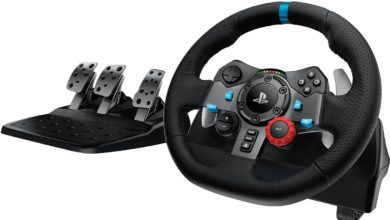Android and Samsung lead in global smartphones sales during 2Q2016
The asian invasion is in full flow and now, four of top five smartphone brands are from Asia and three of these are from China. Samsung took the top spot while Apple came in second with the gap between the two brands widening. Huawei took the third spot. Coming to operating system market share, Google’s Android OS increased share at the top while Apple’s share fell. Every other OS (windows phone, blackberry) look insignifiant now and this will be a two horse race from now on.
Worldwide Smartphone Sales to End Users by Operating System in 2Q16 (Thousands of Units)
|
Operating System |
2Q16 Units |
2Q16 Market Share (%) |
2Q15 Units |
2Q15 Market Share (%) |
|
Android |
296,912.8 |
86.2 |
271,647.0 |
82.2 |
|
iOS |
44,395.0 |
12.9 |
48,085.5 |
14.6 |
|
Windows |
1,971.0 |
0.6 |
8,198.2 |
2.5 |
|
Blackberry |
400.4 |
0.1 |
1,153.2 |
0.3 |
|
Others |
680.6 |
0.2 |
1,229.0 |
0.4 |
|
Total |
344,359.7 |
100.0 |
330,312.9 |
100.0 |
Source: Gartner (August 2016)
Samsung has managed to maintain the lead, with 22.3% market share, thanks to super hit Galaxy S7 series and declining iPhone sales. The upcoming quarter will increase Samsung’s lead as Galaxy Note 7 is out now and Apple’s next iPhone wouldn’t be ready in time to challenge new flagship from Samsung. Apple’s sales in smartphone market declined but continued as runner up with 12.9% of share while Huawei took 3rd spot with 8.9% of market share. Xiaomi is the only other top 5 brand with negative growth and yielded 4th place to Oppo, the fast rising brand. Oppo more than doubled the marketshare, from 2.4% to 5.4% while Xiaomi’s share is down from 4.7% to 4.5% and is set to dip further and they do not have an answer to upcoming smartphones from Apple, Samsung, HTC, Huawei. On the whole, there is 4.3% increase in global smartphone sales.
Worldwide Smartphone Sales to End Users by Vendor in 2Q16 (Thousands of Units)
|
Company |
2Q16 Units |
2Q16 Market Share (%) |
2Q15 Units |
2Q15 Market Share (%) |
|
Samsung |
76,743.5 |
22.3 |
72,072.5 |
21.8 |
|
Apple |
44,395.0 |
12.9 |
48,085.5 |
14.6 |
|
Huawei |
30,670.7 |
8.9 |
26,454.4 |
8.0 |
|
Oppo |
18,489.6 |
5.4 |
8,073.8 |
2.4 |
|
Xiaomi |
15,530.7 |
4.5 |
15,464.5 |
4.7 |
|
Others |
158,530.3 |
46.0 |
160,162.1 |
48.5 |
|
Total |
344,359.7 |
100.0 |
330,312.9 |
100.0 |
Source: Gartner (August 2016)
“Demand for premium smartphones slowed in the second quarter of 2016 as consumers wait for new hardware launches in the second half of the year,” said Anshul Gupta, research director at Gartner.
“Features such as an anti-shake camera optimized for selfies, and rapid charge technology, helped Oppo carve a niche market for itself and boost sales in a highly competitive and commoditized smartphone market,” said Mr. Gupta.
Coming back to the OS market share, Windows OS continued its massive slide and now has mere 0.6% of share, an effect of Microsoft completely ignoring the hardware part of the ecosystem. This time, there is nothing that Microsoft can do to turn the tide. The OS race is strictly two horse race and looks more like OS X vs Windows.
“Google is evolving the Android platform fast, which allows Android players to remain at the cutting edge of smartphone technology,” said Roberta Cozza, research director at Gartner. “Facing a highly commoditized smartphone market, Google’s focus is to further expand and diversify the Android platform with additional functionalities, like virtual reality, enabling more-intelligent experiences and reach into wearables, connected home devices, in-car entertainment and TV.”



